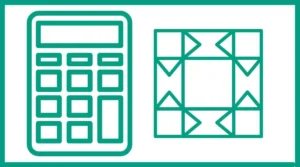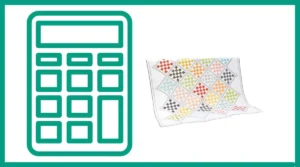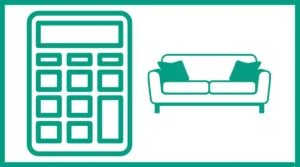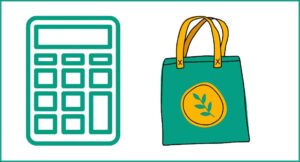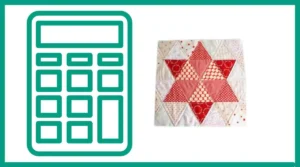You will need:
- yards of fabric for the light logs
- yards of fabric for the dark logs
- yards of fabric for the center squares
- yards of fabric for the border
Understanding the Log Cabin Quilt Calculator
The Log Cabin Quilt Calculator is a valuable tool designed to assist quilters in planning and executing their log cabin quilt projects. This calculator takes the guesswork out of fabric requirements, helping quilters determine the precise amount of material needed for each component of their quilt. By providing accurate measurements, the calculator enables quilters to purchase fabric efficiently, reducing waste and potentially saving money.
Key Components of a Log Cabin Quilt
Before delving into the calculator’s functionality, it’s essential to understand the basic components of a log cabin quilt:
- Center Square: The foundation of each block, typically in a contrasting color.
- Logs: Strips of fabric that are sewn around the center square in a specific order.
- Light Logs: Strips representing the lighter half of the block.
- Dark Logs: Strips representing the darker half of the block.
- Border: The fabric that frames the entire quilt.
How to Use the Log Cabin Quilt Calculator
The calculator requires four key inputs to generate accurate fabric requirements:
- Block Size: The overall dimensions of each log cabin block in inches.
- Log Width: The width of each log strip in inches.
- Number of Blocks: The total number of log cabin blocks in your quilt design.
- Quilt Border: The width of the border you plan to add around the quilt, in inches.
To use the calculator:
- Enter the required measurements in the appropriate fields.
- Click the “Calculate” button.
- Review the results, which will display the yardage needed for light logs, dark logs, center squares, and border fabric.
Interpreting the Results
The calculator provides fabric requirements in yards for each component:
- Light Logs: Yardage for the lighter strips in your blocks.
- Dark Logs: Yardage for the darker strips in your blocks.
- Center Squares: Fabric needed for the central squares of each block.
- Border: Amount of fabric required for the quilt’s outer border.
These calculations take into account standard fabric widths and include a small allowance for seams and potential cutting errors.
Examples of Log Cabin Quilt Designs
To illustrate the versatility of log cabin quilts and the utility of the calculator, let’s consider two examples:
Example 1: Traditional Log Cabin Quilt
For a traditional log cabin quilt with a straight set layout:
- Block Size: 12 inches
- Log Width: 1.5 inches
- Number of Blocks: 20 (for a 4×5 block layout)
- Quilt Border: 4 inches
Using these measurements in the calculator would provide the fabric requirements for a quilt approximately 56 inches by 68 inches (including the border).
Example 2: Modern Log Cabin Variation
For a modern take on the log cabin design with larger blocks:
- Block Size: 18 inches
- Log Width: 2 inches
- Number of Blocks: 9 (for a 3×3 block layout)
- Quilt Border: 5 inches
This configuration would result in a quilt roughly 64 inches square, with the calculator providing precise fabric requirements for this contemporary design.
Tips for Successful Log Cabin Quilt Construction
- Fabric Selection: Choose fabrics with good contrast for the light and dark logs to enhance the pattern’s visual impact.
- Cutting Accuracy: Use a rotary cutter and ruler for precise cuts, especially important for the narrow log strips.
- Consistent Seam Allowance: Maintain a consistent 1/4 inch seam allowance throughout to ensure your blocks come out the correct size.
- Pressing Technique: Press seams toward the outer edge of the block to reduce bulk at the center.
- Block Assembly: Work in a clockwise or counterclockwise direction, adding logs systematically around the center square.
- Layout Variations: Experiment with different block arrangements to create various overall patterns, such as barn raising, straight furrows, or courthouse steps.
Advanced Considerations in Log Cabin Quilt Design
While the Log Cabin Quilt Calculator provides a solid foundation for basic designs, advanced quilters may want to consider additional factors:
Color Theory in Log Cabin Quilts
The traditional log cabin block uses a red center square to symbolize the hearth of the home. However, modern interpretations often play with color to create different effects:
- Monochromatic schemes using various shades of a single color
- Complementary color pairings for high contrast and visual interest
- Gradual color transitions to create an ombré effect across the quilt
Fabric Choices and Their Impact
The type of fabric used can significantly influence the final appearance and texture of your log cabin quilt:
- Solid fabrics for a clean, modern look
- Prints or batiks for added visual texture
- Mixing fabric types (e.g., solids with prints) for depth and interest
Consider how your fabric choices will interact with the log cabin pattern and affect the overall design aesthetics.
Troubleshooting Common Log Cabin Quilt Issues
Even with careful planning and the use of the Log Cabin Quilt Calculator, quilters may encounter some challenges:
- Blocks Not Squaring Up: If blocks are coming out misshapen, double-check your seam allowances and pressing technique.
- Fabric Shortage: The calculator provides estimates, but variations in cutting and seam allowances can affect final requirements. Consider purchasing a little extra fabric as a safety margin.
- Uneven Log Widths: Ensure your cutting is precise and consistent. Using a quarter-inch foot on your sewing machine can help maintain accurate seam allowances.
- Difficulty with Small Logs: For designs with very narrow logs, consider paper piecing techniques for increased accuracy.
